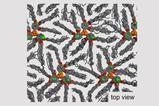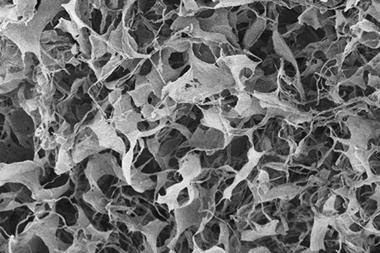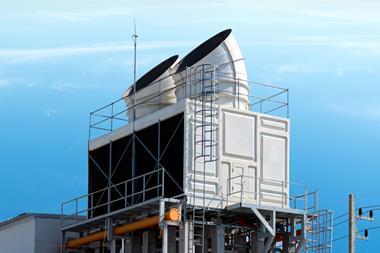Charcoal ‘sponges’ that are charged with hydroxide ions offer a low-cost, energy-efficient way to capture carbon dioxide directly from air. The researchers behind the finding decided to explore activated carbon because it is ‘cheap, stable and made at scale’. The material’s electrical conductivity also permits a rapid release of captured carbon dioxide, allowing the charcoal-based sorbent to easily be reused.
According to Alexander Forse, from the University of Cambridge, UK, capturing carbon from the atmosphere is a last resort, but is something that needs to be investigated due to the scale of the climate emergency. In contrast to the more traditional carbon capture solutions that are based on amines, Forse’s team has investigated using hydroxide ions to bind carbon dioxide. ‘Hydroxides [also] form chemical bonds with carbon dioxide,’ says Forse. ‘While [they] had been explored for carbon capture for a while, our approach is new.’

The secret is ‘sticking’ the hydroxide ions inside the porous structure of activated charcoal. Forse explains that to do this the team make a battery using the carbon sponge as the electrodes. The battery’s electrolyte is full of hydroxide ions and, when a voltage is applied, these ‘charge up’ the sponge, accumulating in the tiny pores of the activated charcoal, which is then washed and dried. ‘The material is then ready to capture carbon dioxide,’ says Forse. ‘When exposed to air, the alkaline hydroxides bind carbon dioxide.’ 100g of the sponge material can soak up around 1g of carbon dioxide, but it’s easy to recycle and reuse the system many times per day.
‘It’s a beautiful [study], with a very innovative proof-of-concept,’ says Susana García, an expert in porous materials for direct air capture at Heriot Watt University in Edinburgh, UK. She explains that the conductivity of carbon conveys an additional advantage: the rapid recuperation of carbon dioxide. ‘Electricity-driven regeneration [requires] lower temperatures, which leads to a lower energy demand,’ explains García.
Camille Petit, an expert in using porous materials for chemical separations at Imperial College London, UK, says that the rapid regeneration of carbon dioxide is an important breakthrough. She explains that in many desorption processes heat is applied to the adsorbent bed to release a bound species. In this case electricity is the trigger, which could lead to significant energy savings. Because of the Joule effect, the adsorbent warms up through resistive heating when a constant voltage is applied, explains Petit.

‘It’s similar to the process that occurs in a kettle,’ says Forse. ‘It’s very rapid, and more efficient than other methods,’ he adds. Whereas traditional trapping methods require temperatures of around 900 ºC for regeneration, the carbon sponges release the captured carbon dioxide between 90 and 100 ºC.
García points out that the adsorption capacity of the charged sponges is ‘approximately one fourth of the uptake reported for current benchmarks’, including amines. Moreover, the capture capacity is almost halved if humidity increases from 10 to 40%, which would be problematic if capturing carbon dioxide in climates with high humidity, for example in the UK where the average humidity is over 70%. ‘Such problematic performance could also hugely hinder applications in point-source carbon capture, [where] gas streams are normally saturated in water,’ explains García López. However, she sees the tuneability, quick kinetics, and simple preparation of the system as major benefits. ‘The method has a huge potential to achieve very good results in the future,’ she adds.
References
H Li et al., Nature, 2024, DOI: 10.1038/s41586-024-07449-2

















No comments yet